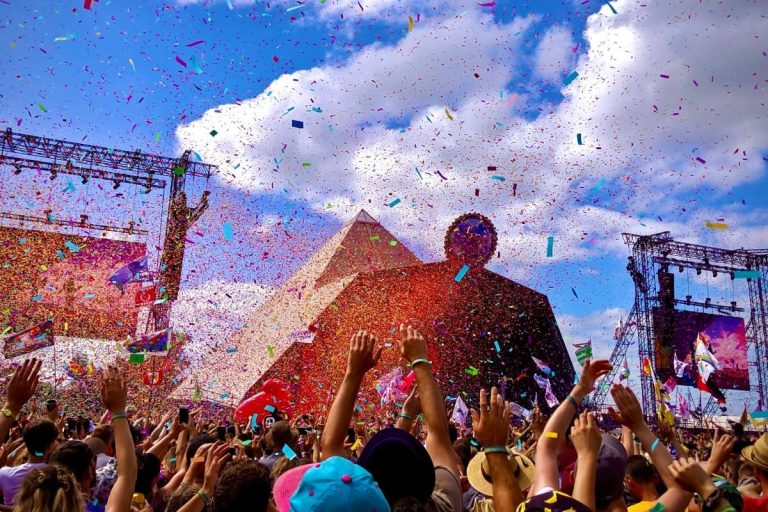Live music is the season’s headline act. Music festivals and blockbuster tours are set to dominate the summer calendar, packing stadiums and fairgrounds from Los Angeles to London as promoters add dates and expand lineups to meet swelling demand.
The crowded slate – from marquee festivals such as Coachella, Glastonbury and Lollapalooza to global stadium runs by pop and rock headliners – is reshaping travel plans, testing ticketing and transit systems, and delivering a jolt to local economies. With heat, crowd safety and pricing still under scrutiny, the industry is betting that the appetite for shared, in-person experiences will define the summer.
Table of Contents
- Festivals surge across North America as ticket prices stabilize and weekday lineups add headliners
- Tours consolidate into stadium residencies and flexible routing while secondary markets outperform expectations
- How to plan your summer calendar presale tactics travel savings and must see sets to prioritize
- In Retrospect
Festivals surge across North America as ticket prices stabilize and weekday lineups add headliners
From coastal metros to inland college towns, promoters report a reset in the summer circuit as ticket costs hold steady and marquee acts shift into weekday slots to lengthen stays, ease peak congestion, and keep turnstiles moving. The recalibration is visible across on-sale patterns and production plans: steadier demand curves, narrower resale spreads, and fuller grounds outside the traditional Friday-Sunday crush, even as crews navigate higher labor and logistics costs. Talent buyers say the festival-tour ecosystem is tightening, with routing synergies accelerating announcements and enabling quick midseason adds when windows open.
- Pricing: Weekend-pass averages plateau, dynamic markups cool, and installment options become standard.
- Lineups: Top-tier artists anchor Thursday and Monday sets, lifting midweek attendance without oversaturating Saturdays.
- Access: Expanded single-day, late-entry, and after-hours tickets widen choices for budget-conscious fans.
- Footprint: Secondary markets launch boutique editions while legacy events scale production instead of capacity.
- Behavior: Earlier travel bookings pair with later, data-led set-time drops to distribute arrivals and manage egress.
Tours consolidate into stadium residencies and flexible routing while secondary markets outperform expectations
Big-ticket tours are recalibrating for efficiency and reach, swapping cross-country churn for multi-night stadium anchors and nimble add-on dates that can pivot around weather, broadcast windows, and venue availability-while demand in smaller and mid-sized cities pushes above forecast, narrowing the gap with legacy hubs and reshaping promoter risk models. Artists benefit from heavier production footprints and one-time load-ins that elevate margins, and fans outside major metros are rewarding the strategy with quicker sell-through and healthier price integrity across primary and resale channels. Key dynamics driving the shift include:
- Secondary-market surge: Upgraded facilities and less calendar congestion are translating into stronger attendance, sturdier walk-up business, and tighter resale spreads.
- Routing agility: Flexible holds enable midweek adds, pop-up matinees, and weather-aware switches without disrupting freight or crew cycles.
- Operational efficiencies: Stadium residencies consolidate production, expand creative scope, and open new media and sponsorship inventory with minimal incremental cost.
- Fan economics: Lower travel and lodging costs outside major metros are supporting higher per-capita spend on concessions and merchandise.
- Marketplace signals: Faster presale clearance, improved yield management, and steadier pricing bands indicate broad, sustainable demand beyond traditional tour strongholds.
How to plan your summer calendar presale tactics travel savings and must see sets to prioritize
With weekends from late spring through early fall increasingly packed by tour stops and multi-stage festivals, strategy is eclipsing spontaneity; the smart play is to stack access across multiple presales, lock flexible travel before fare spikes, and ringfence the performances least likely to be replicated elsewhere.
- Presale tactics: Register with artist, promoter, and venue lists; enable text/app alerts; verify ticketing accounts days in advance; watch on-sale time zones; split queues across devices/browsers; favor single-day passes when schedules collide.
- Travel savings: Hold refundable rooms near transit hubs; fly midweek and into secondary airports; connect via rail or low-cost carriers for final legs; share lodging and rides; prepack festival essentials to avoid on-site premiums; use points for peak weekends.
- Must-see sets: Prioritize first-time headliners, rare reunions, one-off album anniversaries, sunrise/sunset productions, and cross-genre collaborations; build buffer windows for grounds navigation and changeovers so openers and late-night closers aren’t lost to logistics.
In Retrospect
As the season reaches its midpoint, the live sector is leaning into scale: more destination festivals, more stadium itineraries, and longer legs for proven headliners. Demand remains resilient despite higher travel and ticket costs, while city coffers and venue operators report strong ancillary spending. At the same time, organizers are navigating familiar pressure points-staffing, weather risk, insurance, sustainability commitments, and a volatile secondary market.
Whether this surge marks a post-pandemic peak or a new baseline will become clearer as late-summer lineups give way to fall arena runs and 2025 on-sales. For now, the metrics point in one direction: live music is setting the pace for the season, and the industry is arranging next year’s playbook around it.


